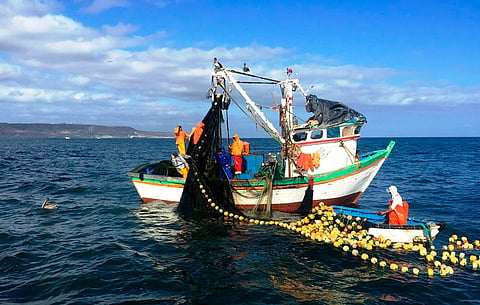According to a recent report, Peru is one of the countries with the best fishing performance in the world, mainly due to its sustainable management of fishery resources.
Photo: Produce.
Peru, the best fishing performance country in South America
According to the Environmental Performance Index 2024 (EPI 2024) by the Yale University and Columbia University science centers with the support of the McCall MacBain Foundation, Peru is one of the best fishing performance countries in the world, and the best fishing performance country in South America.
The report states that this success is largely due to the management of its anchovy stock, which is mainly used to make fishmeal. As is well known, Peru's anchovy fishery is of vital importance to the country, but it is also important to the global aquafeed sector, as it accounts for 20% of the world's fishmeal production in an average year.
Changes to improve anchovy fishery's sustainability are paying results
One of the points highlighted in the EPI 2024 by Yale and Columbia Universities, is the "daring policy" implemented by the Peruvian Government in 2099 introducing changes to improve the sustainability of its anchovy fishery. These include the adoption of a rights-based approach that allocated fishing quotas to several companies and even the decommissioning of about a quarter of the Peruvian fishing fleet.
Currently, the anchovy fishery is managed sustainably, and its population has recovered, as indicated by the good results after the closing of Peru's first anchovy season 2024 with more than 98.21% of the global quota caught of 2,475,000 MT allocated.
The maximum catch quota limit had been confirmed thanks to scientific research conducted by the Peruvian Institute of the Sea (Imarpe), which helped the Government to make an informed decision when setting the quota limit in order to promote responsible fishing and the conservation of the country's marine resources.
However, the Environmental Performance Index 2024 also recalls that Peru's anchovy fishery is threatened by warming ocean temperatures. A new report by the Food and Agriculture Organization of the United Nations (FAO) released last July highlighted that high emissions pose significant risks to major fish-producing countries.
Among them is Peru which, together with China, India, Indonesia, the United States, Russia, and Vietnam, account for almost 60% of the world's fishery and aquaculture production. In the Peruvian case, the FAO report highlights that if current trends of high emissions continue, leading to a global warming of 3-4.0 °C by the end of the century, the fish biomass could decrease by 37.3% in Peru's Exclusive Economic Zone.
FAO congratulates Peru for its sustainable management of marine resources
Following the EPI 2024, Peru was also congratulated by FAO. The United Nations' Food and Agriculture Organization highlighted the improvements implemented in recent years by the South American country in the management of its anchovy fishery, used - as mentioned - mainly for indirect human consumption through the production of fishmeal and fish oil, although it also has a quota dedicated to direct human consumption that in 2024 has been set at 150,000 tons.
In the FAO's congratulations, sent through its Director of Fisheries and Aquaculture, Manuel Barange, the official acknowledged the scientific work of Imarpe, considering of utmost importance the role it plays in monitoring fishery resources, which, as mentioned above, allows establishing the ideal time for the extraction of the resource, establishing quota levels without affecting the sustainability of these.
"This dynamic is taken in the face of various environmental factors and fish stock quality. And that almost immediate response makes the management more effective. And that is where we congratulate the Government of Peru and the Peruvian Institute of the Sea, of course," Barange pointed out.
Nevertheless, this sustainable management of Peruvian sea resources carried out in recent years by the Peruvian Ministry of Production (Produce) is not only proving positive for anchovy. The prospects - also supported by Imarpe's scientific research - were so optimistic that Produce has increased the maximum catch quota for other species destined for direct human consumption, such as bonito or jack mackerel.
Thus, by the end of the first half of 2024, the Peruvian fishing sector had registered a growth of 44.8% compared to the same period of 2023 and with good prospects for the whole year. Based on Imarpe studies, Produce figures indicate that adding the extractive and processing activities of the Peruvian fishing industry, an annual growth of 18.5% is expected, representing more than PEN 4.7 billion (EUR 1.1 billion / USD 1.2 billion) of contribution to the Peruvian economy, which translates into a contribution of almost 1% to the country's GDP.


